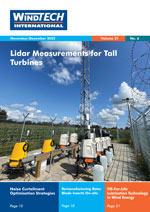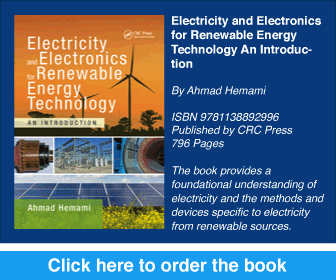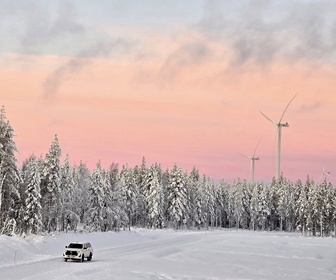- Category: Articles
Getting the Most from Your Condition-Monitoring System
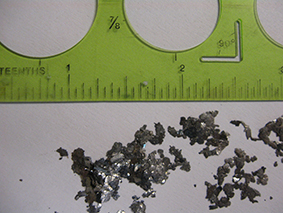 This article explores the cost drivers of wind farm operations and maintenance, and strategies for boosting return on investment. Condition monitoring (CM) is a commonly used technology to prevent or even predict failures, though not all systems are created equal. Condition-monitoring systems range in price, quality and ease of use. Experience shows that early detection is the key to reducing maintenance costs. It allows an operator to schedule maintenance events well in advance and avoid more costly fixes that come as a result of escalating wear and secondary damage. Through two examples, this article illustrates how condition monitoring can be a smart investment, provided this technology is used to make well-informed and timely decisions.
This article explores the cost drivers of wind farm operations and maintenance, and strategies for boosting return on investment. Condition monitoring (CM) is a commonly used technology to prevent or even predict failures, though not all systems are created equal. Condition-monitoring systems range in price, quality and ease of use. Experience shows that early detection is the key to reducing maintenance costs. It allows an operator to schedule maintenance events well in advance and avoid more costly fixes that come as a result of escalating wear and secondary damage. Through two examples, this article illustrates how condition monitoring can be a smart investment, provided this technology is used to make well-informed and timely decisions.
By Brogan Morton, Product Manager for Turbine Health Monitoring, NRG Systems, USA
 This article explores the cost drivers of wind farm operations and maintenance, and strategies for boosting return on investment. Condition monitoring (CM) is a commonly used technology to prevent or even predict failures, though not all systems are created equal. Condition-monitoring systems range in price, quality and ease of use. Experience shows that early detection is the key to reducing maintenance costs. It allows an operator to schedule maintenance events well in advance and avoid more costly fixes that come as a result of escalating wear and secondary damage. Through two examples, this article illustrates how condition monitoring can be a smart investment, provided this technology is used to make well-informed and timely decisions.
This article explores the cost drivers of wind farm operations and maintenance, and strategies for boosting return on investment. Condition monitoring (CM) is a commonly used technology to prevent or even predict failures, though not all systems are created equal. Condition-monitoring systems range in price, quality and ease of use. Experience shows that early detection is the key to reducing maintenance costs. It allows an operator to schedule maintenance events well in advance and avoid more costly fixes that come as a result of escalating wear and secondary damage. Through two examples, this article illustrates how condition monitoring can be a smart investment, provided this technology is used to make well-informed and timely decisions.By Brogan Morton, Product Manager for Turbine Health Monitoring, NRG Systems, USA
- Category: Articles
IRWES: New Thinking about Wind Energy in the Urban Environment
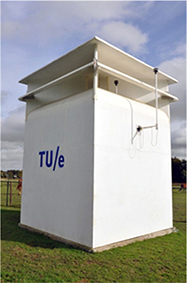 The Integrated Roof Wind Energy System (IRWES) is a novel wind energy solution invented to overcome the limitations of many of today’s available renewable energy technologies and make ‘clean’ energy a reality for our cities and our planet. This revolutionary, integrated energy system is created by using an axial array of skewed, shaped funnels, which exploit the Venturi Effect to accelerate the wind flow towards an enclosed turbine. This inventive use of shape and geometry results in an air inlet that causes the airflow to converge, and creates a flow of air with high mass and velocity, which is funnelled towards the vertical axis wind turbine in the centre-top of the roof. This high-energy air has the potential to generate a lot of power.
The Integrated Roof Wind Energy System (IRWES) is a novel wind energy solution invented to overcome the limitations of many of today’s available renewable energy technologies and make ‘clean’ energy a reality for our cities and our planet. This revolutionary, integrated energy system is created by using an axial array of skewed, shaped funnels, which exploit the Venturi Effect to accelerate the wind flow towards an enclosed turbine. This inventive use of shape and geometry results in an air inlet that causes the airflow to converge, and creates a flow of air with high mass and velocity, which is funnelled towards the vertical axis wind turbine in the centre-top of the roof. This high-energy air has the potential to generate a lot of power.
By Dr Rossella M. Ferraro, Dr Alexander B. Suma and Dr Faas Moonen, Technische Universiteit Eindhoven, The Netherlands
 The Integrated Roof Wind Energy System (IRWES) is a novel wind energy solution invented to overcome the limitations of many of today’s available renewable energy technologies and make ‘clean’ energy a reality for our cities and our planet. This revolutionary, integrated energy system is created by using an axial array of skewed, shaped funnels, which exploit the Venturi Effect to accelerate the wind flow towards an enclosed turbine. This inventive use of shape and geometry results in an air inlet that causes the airflow to converge, and creates a flow of air with high mass and velocity, which is funnelled towards the vertical axis wind turbine in the centre-top of the roof. This high-energy air has the potential to generate a lot of power.
The Integrated Roof Wind Energy System (IRWES) is a novel wind energy solution invented to overcome the limitations of many of today’s available renewable energy technologies and make ‘clean’ energy a reality for our cities and our planet. This revolutionary, integrated energy system is created by using an axial array of skewed, shaped funnels, which exploit the Venturi Effect to accelerate the wind flow towards an enclosed turbine. This inventive use of shape and geometry results in an air inlet that causes the airflow to converge, and creates a flow of air with high mass and velocity, which is funnelled towards the vertical axis wind turbine in the centre-top of the roof. This high-energy air has the potential to generate a lot of power.By Dr Rossella M. Ferraro, Dr Alexander B. Suma and Dr Faas Moonen, Technische Universiteit Eindhoven, The Netherlands
- Category: Articles
Special Lubricants for Use at Low Temperatures
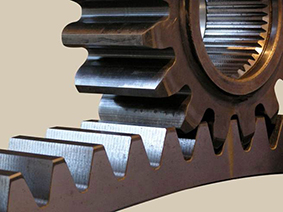 The rapid expansion of wind energy throughout the world has been accompanied by a significant growth in wind power plant size. Rotor diamaters of more than 120 metres and nominal outputs as high as 3MW have become standard. However, the continuous increase in output and efficiency has not automatically resulted in higher reliability of the plants. The consequences are an immense maintenance effort and high costs. In this article Peter Mages of Klüber Lubrications explains how two of the company’s lubricants can help to ensure machine efficiency and trouble-free operation, even at low temperatures.
The rapid expansion of wind energy throughout the world has been accompanied by a significant growth in wind power plant size. Rotor diamaters of more than 120 metres and nominal outputs as high as 3MW have become standard. However, the continuous increase in output and efficiency has not automatically resulted in higher reliability of the plants. The consequences are an immense maintenance effort and high costs. In this article Peter Mages of Klüber Lubrications explains how two of the company’s lubricants can help to ensure machine efficiency and trouble-free operation, even at low temperatures.
By Peter Mages, Klüber Lubrications, Germany
 The rapid expansion of wind energy throughout the world has been accompanied by a significant growth in wind power plant size. Rotor diamaters of more than 120 metres and nominal outputs as high as 3MW have become standard. However, the continuous increase in output and efficiency has not automatically resulted in higher reliability of the plants. The consequences are an immense maintenance effort and high costs. In this article Peter Mages of Klüber Lubrications explains how two of the company’s lubricants can help to ensure machine efficiency and trouble-free operation, even at low temperatures.
The rapid expansion of wind energy throughout the world has been accompanied by a significant growth in wind power plant size. Rotor diamaters of more than 120 metres and nominal outputs as high as 3MW have become standard. However, the continuous increase in output and efficiency has not automatically resulted in higher reliability of the plants. The consequences are an immense maintenance effort and high costs. In this article Peter Mages of Klüber Lubrications explains how two of the company’s lubricants can help to ensure machine efficiency and trouble-free operation, even at low temperatures.By Peter Mages, Klüber Lubrications, Germany
- Category: Articles
Correcting Yaw Errors and Measuring the Improved Power Curves
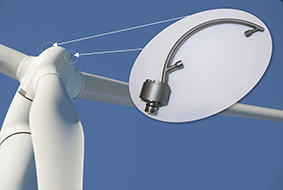 It is an all too common sight: turbines in a wind farm pointing in different directions. This means, of course, that some of the turbines will be operating with a significant yaw misalignment. This in turn causes loss of energy production and higher fatigue loads. The obvious explanation is that the flow pattern where the vane for yaw control is positioned (usually at the back of the nacelle) has been disturbed by the upstream rotor and by the proximity of the nacelle. Other reasons may be that the instruments are not aligned properly, or may simply be of quite poor quality. There are, at present, only two technologies capable of measuring the yaw misalignment correctly – a nacelle-mounted lidar and the Spinner Anemometer. In this article we demonstrate that the Spinner Anemometer has some very obvious advantages related to cost, data quality and robustness. We will be reporting on our experience of testing the instrument for measurements of yaw misalignment and power curve improvements.
It is an all too common sight: turbines in a wind farm pointing in different directions. This means, of course, that some of the turbines will be operating with a significant yaw misalignment. This in turn causes loss of energy production and higher fatigue loads. The obvious explanation is that the flow pattern where the vane for yaw control is positioned (usually at the back of the nacelle) has been disturbed by the upstream rotor and by the proximity of the nacelle. Other reasons may be that the instruments are not aligned properly, or may simply be of quite poor quality. There are, at present, only two technologies capable of measuring the yaw misalignment correctly – a nacelle-mounted lidar and the Spinner Anemometer. In this article we demonstrate that the Spinner Anemometer has some very obvious advantages related to cost, data quality and robustness. We will be reporting on our experience of testing the instrument for measurements of yaw misalignment and power curve improvements.
By Jørgen Højstrup, Jesper Degn Nielsen and Jens Lund Lauritsen, ROMO Wind, Denmark
 It is an all too common sight: turbines in a wind farm pointing in different directions. This means, of course, that some of the turbines will be operating with a significant yaw misalignment. This in turn causes loss of energy production and higher fatigue loads. The obvious explanation is that the flow pattern where the vane for yaw control is positioned (usually at the back of the nacelle) has been disturbed by the upstream rotor and by the proximity of the nacelle. Other reasons may be that the instruments are not aligned properly, or may simply be of quite poor quality. There are, at present, only two technologies capable of measuring the yaw misalignment correctly – a nacelle-mounted lidar and the Spinner Anemometer. In this article we demonstrate that the Spinner Anemometer has some very obvious advantages related to cost, data quality and robustness. We will be reporting on our experience of testing the instrument for measurements of yaw misalignment and power curve improvements.
It is an all too common sight: turbines in a wind farm pointing in different directions. This means, of course, that some of the turbines will be operating with a significant yaw misalignment. This in turn causes loss of energy production and higher fatigue loads. The obvious explanation is that the flow pattern where the vane for yaw control is positioned (usually at the back of the nacelle) has been disturbed by the upstream rotor and by the proximity of the nacelle. Other reasons may be that the instruments are not aligned properly, or may simply be of quite poor quality. There are, at present, only two technologies capable of measuring the yaw misalignment correctly – a nacelle-mounted lidar and the Spinner Anemometer. In this article we demonstrate that the Spinner Anemometer has some very obvious advantages related to cost, data quality and robustness. We will be reporting on our experience of testing the instrument for measurements of yaw misalignment and power curve improvements.By Jørgen Højstrup, Jesper Degn Nielsen and Jens Lund Lauritsen, ROMO Wind, Denmark
- Category: Articles
An Undervalued Source of Wind Energy?
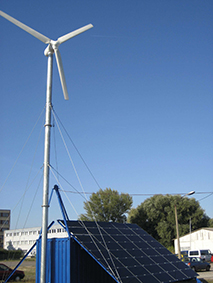 Small and medium-scale wind turbines do not get as much attention as larger, utility-scale wind turbines. Recently the focus seems to have been on bigger and bigger turbines. But utility-scale wind is not an ideal solution everywhere, especially in less developed regions of the world without sufficient grid infrastructure into which to feed the power. In this article Frits Ogg gives his view on small and medium-scale wind, based on his visit to HUSUM WindEnergy.
Small and medium-scale wind turbines do not get as much attention as larger, utility-scale wind turbines. Recently the focus seems to have been on bigger and bigger turbines. But utility-scale wind is not an ideal solution everywhere, especially in less developed regions of the world without sufficient grid infrastructure into which to feed the power. In this article Frits Ogg gives his view on small and medium-scale wind, based on his visit to HUSUM WindEnergy.
By Frits Ogg, renewable energy consultant, The Netherlands
 Small and medium-scale wind turbines do not get as much attention as larger, utility-scale wind turbines. Recently the focus seems to have been on bigger and bigger turbines. But utility-scale wind is not an ideal solution everywhere, especially in less developed regions of the world without sufficient grid infrastructure into which to feed the power. In this article Frits Ogg gives his view on small and medium-scale wind, based on his visit to HUSUM WindEnergy.
Small and medium-scale wind turbines do not get as much attention as larger, utility-scale wind turbines. Recently the focus seems to have been on bigger and bigger turbines. But utility-scale wind is not an ideal solution everywhere, especially in less developed regions of the world without sufficient grid infrastructure into which to feed the power. In this article Frits Ogg gives his view on small and medium-scale wind, based on his visit to HUSUM WindEnergy.By Frits Ogg, renewable energy consultant, The Netherlands
- Category: Articles
Needed: A Formula for More Realistic Utilisation of Naturally Recurring Resources
 Although Windtech International mainly focuses on the technology of the wind industry, we are aware that it is important sometimes to step back from the development of new equipment to look at the picture more generally. For example, where should we concentrate research and innovation efforts and how does this tie in with considerations about use of different types of energy and whether or not they are subsidised? In this article, Gene Kelley, of W2 Energy Development Corp, argues that maybe we need to re-examine how we look at the availability and costs of energy resources. He concludes that we should prioritise our investments in time and capital on the projected longevity of a resource and how efficiently it can be harvested and used, while at the same time identifying and eliminating the use of derivative energy wherever possible.
Although Windtech International mainly focuses on the technology of the wind industry, we are aware that it is important sometimes to step back from the development of new equipment to look at the picture more generally. For example, where should we concentrate research and innovation efforts and how does this tie in with considerations about use of different types of energy and whether or not they are subsidised? In this article, Gene Kelley, of W2 Energy Development Corp, argues that maybe we need to re-examine how we look at the availability and costs of energy resources. He concludes that we should prioritise our investments in time and capital on the projected longevity of a resource and how efficiently it can be harvested and used, while at the same time identifying and eliminating the use of derivative energy wherever possible.
By Gene R. Kelley, Founder and Chief Executive Officer, W2 Energy Development Corporation, USA
 Although Windtech International mainly focuses on the technology of the wind industry, we are aware that it is important sometimes to step back from the development of new equipment to look at the picture more generally. For example, where should we concentrate research and innovation efforts and how does this tie in with considerations about use of different types of energy and whether or not they are subsidised? In this article, Gene Kelley, of W2 Energy Development Corp, argues that maybe we need to re-examine how we look at the availability and costs of energy resources. He concludes that we should prioritise our investments in time and capital on the projected longevity of a resource and how efficiently it can be harvested and used, while at the same time identifying and eliminating the use of derivative energy wherever possible.
Although Windtech International mainly focuses on the technology of the wind industry, we are aware that it is important sometimes to step back from the development of new equipment to look at the picture more generally. For example, where should we concentrate research and innovation efforts and how does this tie in with considerations about use of different types of energy and whether or not they are subsidised? In this article, Gene Kelley, of W2 Energy Development Corp, argues that maybe we need to re-examine how we look at the availability and costs of energy resources. He concludes that we should prioritise our investments in time and capital on the projected longevity of a resource and how efficiently it can be harvested and used, while at the same time identifying and eliminating the use of derivative energy wherever possible.By Gene R. Kelley, Founder and Chief Executive Officer, W2 Energy Development Corporation, USA
- Category: Articles
A Zero-Blade Non-Rotational Wind Converter
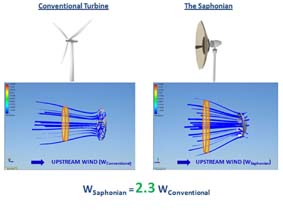 A new bladeless wind technology has been developped to harness the wind differently and more efficiently. The Saphonian has no blades, does not rotate, and its design is largely inspired from sailboats. It is a serious attempt to provide a clean, cheap and storable source of energy.
A new bladeless wind technology has been developped to harness the wind differently and more efficiently. The Saphonian has no blades, does not rotate, and its design is largely inspired from sailboats. It is a serious attempt to provide a clean, cheap and storable source of energy.
By Anis Aouini and Hassine Labaied, Co-founders of Saphon Energy, Tunisia
 A new bladeless wind technology has been developped to harness the wind differently and more efficiently. The Saphonian has no blades, does not rotate, and its design is largely inspired from sailboats. It is a serious attempt to provide a clean, cheap and storable source of energy.
A new bladeless wind technology has been developped to harness the wind differently and more efficiently. The Saphonian has no blades, does not rotate, and its design is largely inspired from sailboats. It is a serious attempt to provide a clean, cheap and storable source of energy.By Anis Aouini and Hassine Labaied, Co-founders of Saphon Energy, Tunisia
Use of cookies
Windtech International wants to make your visit to our website as pleasant as possible. That is why we place cookies on your computer that remember your preferences. With anonymous information about your site use you also help us to improve the website. Of course we will ask for your permission first. Click Accept to use all functions of the Windtech International website.



